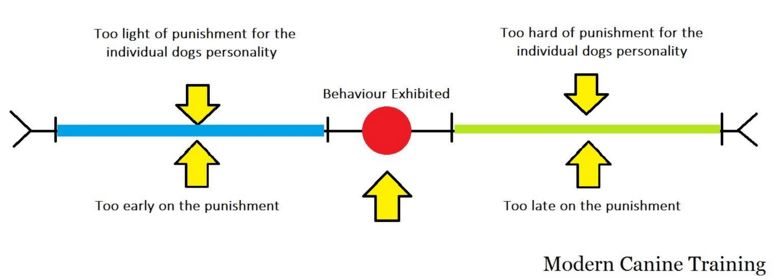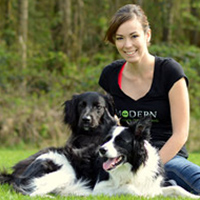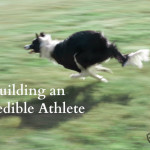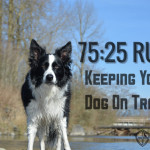Does Punishing A Dog Really Work?

There are many trainers in the world that are punishment-based, meaning punishment makes up the majority of their training techniques. Then there are balanced trainers who use punishment and positive reinforcement to train dogs, meaning they’ll use a correction (verbal or physical) to reprimand the dog, but also use positive reinforcement when they like certain behaviours. And last, we have positive reinforcement-based trainers. These trainers make up the majority of trainers nowadays; their training being based on majority, if not all, of positive reinforcement.
Punishment is a hot topic and very controversial in this day and age - mainly because studies show that punishment inhibits learning, creates stress and ruins relationships between dog and owner. However, there are tv shows and trainers who use punishment on dogs and it works magnificently. So which type do you use?
First off, you need to understand the different types of punishment that are used in order to better understand whether you’d use it or opt not to.
Positive Punishment
This means presenting a negative consequence after an undesired behavior is exhibited, making the behaviour less likely to happen in the future. Basically, adding something unpleasant after a dog has exhibited a behaviour.
Example: the dog jumps on the counter and we pop the dog because he did that.
Negative Punishment
This means taking something good or desirable away in order to reduce the occurrence of a particular behaviour. Basically, you’re taking away something the dog likes as a result of their behaviour.
Example: the dog barks at another dog to say hello, so we remove the dog from the situation.
Both techniques have their pro's and con’s - I’m here to clear the air with honesty and shed some light where some may be confused or unaware.
Both forms of punishment do nothing to teach the dog what you want from them.
Incorrectly done: They both cause frustration and confusion, and cause negative stress and negative associations which can result with aggressive behaviours. They both cause your dog to feel intimidated, which will inhibit any positive relationship from forming and positive punishment can cause physical injuries that cannot be undone.
Correctly done: They can deter the behaviour from happening again.
Positive Punishment is rarely done correctly; it’s actually rarely done even remotely close in proximity of the undesirable behaviour for the dog to link them together. Timing is crucial for punishment to be successful. If you need to repeat it more than once, you’re not doing it right. If you’re not doing it right, you’re simply abusing your dog or desensitizing them to the physical or psychological reprimands you’re doing which, in the long, run will cause you to become more violent in order to get your point across. This can cause serious damage to your dog and the people and dogs surrounding you.

The image above is demonstrating how positive punishment is effectively used to eliminate an undesirable behaviour. The red dot being the moment in time that the behaviour was exhibited and the intensity at which the behaviour was exhibited with. If you were anywhere outside the middle space, your punishment will not work.
It is incredibly difficult, even for the most experienced punishment-based trainer, to apply positive punishment at the correct timing for the maximum effect to take place (stop the behaviour). This is why positive punishment should not be used as it has more ill effects than positive ones, even if it works.
Negative punishment is a much more humane way to punish and is often used by some positive reinforcement trainers. This form of punishment is definitely the more humane way to stop a dog from exhibiting an undesirable behaviour with minimal side effects, compared to positive punishment. Negative punishment’s biggest downfall is its ability to create frustration in dogs, especially if the owner is late on the punishment, because the dog doesn’t know what made the thing they like go away, so they get frustrated and usually end up reacting more.
Instinctual Behaviour
Dogs will always do what’s most reinforcing to THEM, meaning they come pre-wired (just like humans) to do what their brain and instincts tell them do. This can be chasing squirrels, jumping on an owner to greet, barking at a person on their territory and so forth. Dogs do not come pre-wired with guilt or reason; everything they do, they do for a reason, and it is up to you, the owner, to figure out why they are doing the behaviour in the first place and try to see the reinforcement they are getting from it in order to continue exhibiting the behaviour.
Dogs are not like humans, that’s pretty obvious, but they’re also not their ancestors, the wolf. Dogs are an amazing, domesticated animal who have worked very closely with humans for over 15,000 years, helping them as needed. In order to understand if you should punish your dog, you need to know WHO your dog is.
Herding breeds were meant to work livestock, and in order to do so, they needed to have certain abilities to do the job quickly and precisely. Such abilities include: nipping, gripping, controlling through pressure and intimidation, running fast, being agile and having incredible endurance. These behaviours, depending on your herding breed, were bred in for years through selective breeding. These behaviours become hard-wired in a dog’s brain, along with the survival instinct of fight or flight (like all living creatures). So when we think about punishing your dog for taking off after birds or nipping running children, is it fair to say they should get in trouble for an instinct that is so natural to them that they react before they even think?
Now, let’s take that same example and put it into another breed - the Great Pyrenees - a dog known for its guardian nature to protect. Take this dog and place it in a suburban neighbourhood, it barks and bites people that come onto the property, the owners punish the dog for barking, punish it for reacting and punish it for well, everything the human doesn’t like. Is this fair to take a dog that was specifically bred to alert, intimidate and protect territory with aggression and punish it for doing its job? For acting on instincts, thinking it did a job well done, only to be scolded and left socially isolated?
By these examples, I’m trying to enlighten you on the fact of the ethics behind punishment. How can you punish a dog for doing a natural behaviour? All behaviours that dogs exhibit (unless it’s idiopathic – rare) are natural; they’re just being the dogs we humans bred them to be.
Learned Behaviour
This will apply to what most owners face with their dogs, which are the behaviours that dogs have learned through reinforcement - usually accidental reinforcement by the environment or the owners themselves.
Counter Surfing
The dog smells something amazing, so he simply and innocently jumps up to investigate the wonderful aroma and finds a tantalizing piece of meat on the counter. He grabs it, eats it and is pleasantly rewarded.
Jumping On People
The dog is excited to see you or a stranger, and because our faces are higher up than theirs are, they jump to reach us. Accidentally, we either touch the dog (bringing their paws back down), talk to the dog (asking them to get down) or even worse, we pet the dog.
Barking
Barking is normal; they have a voice box for a reason. Some dogs were bred to bark more than others, but generally all dogs bark at some point in time or another. Now think about a dog in the backyard or in the house who sees another dog or human step by their territory - they bark to let the intruder know, “I’m here! Not yours!” The intruder keeps walking past the home until they are gone, so in your dog’s eyes, barking just made them leave. Success occurred, so he’ll repeat it.
All these examples and any other behaviour humans perceive as negative, are driven by reinforcement - there is some reward waiting at the end of that behaviour. But once that behaviour has been exhibited and was accidentally reinforced, the dog will practice it more often, leading to some serious other behavioural issues, this is called learned behaviour.
Emotional Behaviour
When I say “emotional” I’m meaning any exhibiting behaviour that is being driven by an emotional response. Much of the time you will see aggression being the exhibiting behaviour that owners will want to punish, and often because they don’t even know the dog is emotionally struggling.
Dogs have a limited communication system that humans understand, so they will often use the same behaviours for a number of different reasons: barking, snarling, lunging – all these behaviours can mean excitement AND aggression.
Dogs that have had either a traumatic experience or a combined negative experience over and over, will often act out aggressively because they possibly tried other behaviours but they didn’t work, so they will end up resorting to their fight response (fight or flight).
If your dog is exhibiting aggressive behaviour due to an underlying emotional response, punishment will do NO GOOD. In fact, it will make it worse….quite quickly. Because ultimately, you’re just creating a more negative experience and more stress, and stress is the main ingredient when it comes to creating aggression.
When working with a dog that has an underlying negative emotional response to a stimuli (trigger), you want to avoid anything negative. This comes down to management and pro-active, positive-based training.
You can change ANY behaviour, mild or serious, without punishment. However, because you’re working with human and dog, it’s easily said, and not so easily done. Punishment begins where knowledge ends, especially when humans don’t understand something, so they will often relate to quick impulses to stop the behaviour in its tracks. This is where you get your first taste of punishment and you get addicted because violence feels good, especially when the dog stops the negative behaviour immediately, we think we did well. That moment reinforced us, the human, and we will readily use it over and over again without thinking of the consequences to our actions. But when the dog does the same (acting aggressively) they are punished, usually quite harshly. It’s not really fair, is it?
What makes us so special to punish,
if we didn’t take the time to train our
dog WHAT to do?
Punishment inhibits learning. All you’re doing is stopping something, rather than teaching the dog what they should do. You’re just saying, “don’t do that or else”. The dog doesn’t know that this applies to every single similar situation; they may think it was only in that moment in time. However, when we keep punishment as our main training technique, we suppress and suppress until another behaviour pops up in that place, because you’re only focusing on the exhibiting behaviour, not the underlying issue that is causing the dog to exhibit the negative behaviour.
This can take a bit of discipline and restraint on the human side, too. But if you take the time to try to understand your dog through this lens, you may actually learn a lot about your dog and grow your relationship to amazing heights.
Article By:
Kris Crestejo, CDBC
Meet Our Evangelist







